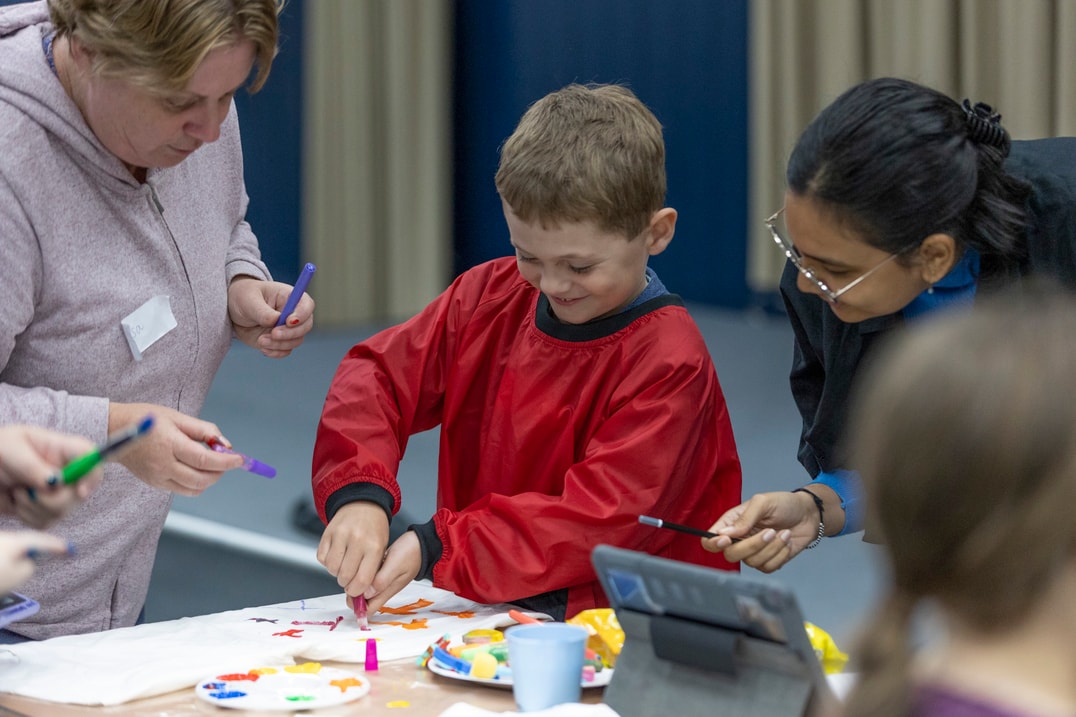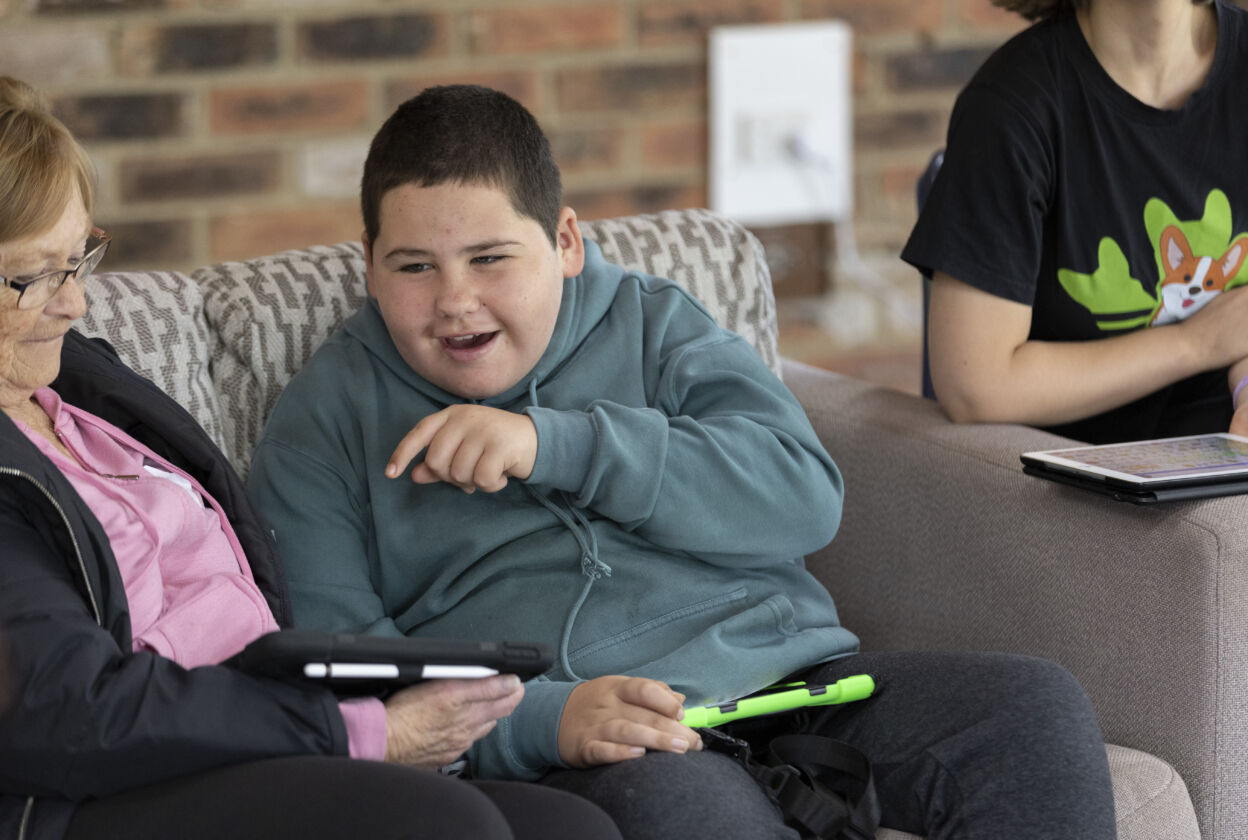A Complete Guide to Occupational Therapy for Autism
Explore our complete guide to occupational therapy for autism. Learn effective strategies and interventions to support skill development and daily living.


Autism and ADHD are two neurodevelopmental conditions that often share overlapping traits, both of which are part of the broader spectrum of neurodiversity, which can make them difficult to distinguish—especially in early childhood. Symptoms like difficulty with attention, social interaction challenges, impulsivity, or repetitive behaviors can blur the lines between the two, leading to confusion for parents, educators, and even healthcare professionals. This overlap can result in delayed or incorrect diagnoses, which in turn may hinder timely support and effective intervention.
Understanding the difference between Autism Spectrum Disorder (ASD) and Attention-Deficit/Hyperactivity Disorder (ADHD) is essential for creating tailored support strategies that truly meet a child's needs. Read our complete guide on Autism vs ADHD [Definition, Differences & More] to gain deeper insight into how these two conditions compare, overlap, and require unique support approaches for your child’s development. Early and accurate identification allows for more focused therapies, better communication strategies, and a stronger foundation for long-term development. In this blog, we’ll explore the key similarities and differences between autism and ADHD, explain why they are often confused, and offer guidance for parents and caregivers seeking clarity and direction.
If you have concerns about your child’s behaviour, don’t wait—please reach out, we’re here to help you. Consult Scope Australia for expert guidance and professional assessments tailored to your child’s unique needs.
Shyness is a natural part of child development and can manifest in various ways depending on personality, upbringing, and experiences. While some level of shyness is normal, recognising the signs early can help parents and caregivers support their child’s social and emotional growth. Here are three common indicators of shyness and what they might mean in a developmental context:
Shy children often find it uncomfortable to maintain eye contact, especially with unfamiliar people. This can be a sign of social anxiety or simply a way to cope with feeling overwhelmed. Eye contact is a key part of nonverbal communication, so avoiding it may be a child’s way of shielding themselves from perceived judgment or pressure during social interactions.
A shy child may take longer to warm up in new environments, such as at school, birthday parties, or playgrounds. They might stay on the sidelines, observe others before joining in, or even avoid participation altogether. This hesitance is usually rooted in a lack of confidence or fear of negative outcomes, such as being rejected or not knowing how to interact with others.
Many shy children seek comfort and safety by staying close to their parents or trusted adults, especially in unfamiliar settings. This behavior is a natural response to anxiety and uncertainty. While it's a normal developmental phase for toddlers, continued clinging in older children may indicate a deeper level of social discomfort that could benefit from gentle encouragement and support to build independence.
Understanding these signs in the context of a child’s temperament and environment is important. Some children are naturally more reserved, while others may develop shyness due to limited social exposure or overly protective environments. With patience and the right support, shy children can gradually gain the confidence to engage more comfortably with the world around them.
Read our Guide on: Is my child shy or is it a sign of autism?
Autism Spectrum Disorder (ASD) is a neurodevelopmental condition that affects how a person communicates, interacts socially, and processes sensory information. It is called a "spectrum" because it presents differently in every individual—ranging from mild to more pronounced challenges. Autism is typically diagnosed in early childhood, though signs can sometimes be noticed even in infancy.
Children with autism may struggle to understand social cues, maintain eye contact, or engage in typical back-and-forth conversations. They might have delayed speech, use language in unusual ways, or prefer solitary play over interacting with peers. These challenges go beyond simple shyness and reflect deeper differences in how they perceive and engage with the social world.
Many children with ASD engage in repetitive actions such as hand-flapping, lining up toys, or repeating the same phrases. They may also show a strong preference for routine and become distressed when their usual schedule is disrupted. These behaviors are often comforting for them and help manage anxiety or overstimulation.
Sensory processing differences are another common trait of autism. A child might be overly sensitive to lights, sounds, textures, or smells, or conversely, seem less responsive to pain or temperature. These sensitivities can affect their behavior and responses in everyday environments.
Unlike general personality traits like shyness—which can vary with mood, maturity, or environment—autism involves consistent patterns of behavior and communication differences. Recognising these early signs is important for accessing appropriate support and helping children reach their full potential through tailored interventions.
Aspect | Shy Child | Child with Autism (ASD) |
Social Interaction | Hesitant but wants to engage once comfortable | Difficulty understanding or initiating social interactions |
Eye Contact | Avoids eye contact due to nervousness | Limited or inconsistent eye contact not always related to anxiety |
Communication | Age-appropriate language; may be quiet in new situations | May have delayed speech, unusual language, or limited communication |
Repetitive Behaviors | Not typical | May engage in repetitive movements or routines |
Response to Change | Adapts with reassurance | Often becomes distressed with routine changes |
Sensory Sensitivities | Generally not present | Common; may overreact or underreact to sounds, textures, etc. |
Desire for Social Connection | Desires friendships but may need time to open up | May show limited interest in social relationships |
While shyness is a common and often temporary trait in many children, there are certain red flags that may indicate something more, such as Autism Spectrum Disorder (ASD) or another developmental concern. Parents and caregivers should be attentive if a child consistently avoids social interaction, shows little interest in communicating with others, engages in repetitive behaviors, or displays intense reactions to sensory input like lights, sounds, or textures. These signs, especially when persistent, may go beyond typical shyness.
It’s also important to monitor developmental milestones, such as responding to their name by 12 months, using simple words by 16 months, forming two-word phrases by age 2, and showing interest in other children. Missing these milestones, combined with behaviors that seem unusual or extreme, can be a sign that further evaluation is needed.
Early diagnosis and intervention are key. Identifying developmental differences as early as possible allows for timely support, therapies, and strategies that can significantly improve a child's communication, learning, and social skills. If you have concerns, it's always best to consult a pediatrician or developmental specialist for guidance.
If you're truly concerned and seeking professional support, consider reaching out to Scope Australia—a trusted organisation dedicated to helping individuals with developmental needs.
When there are concerns about whether a child is simply shy or may have Autism Spectrum Disorder (ASD), professionals use a comprehensive approach to assess the child’s development. It often begins with a pediatric evaluation, where the child’s medical history, behavior, and developmental milestones are reviewed. Pediatricians may use observational techniques and ask detailed questions to understand the child’s social, communication, and behavioral patterns.
Behavioral assessments and screening tools are commonly used to gather more precise information. These might include tools like the M-CHAT (Modified Checklist for Autism in Toddlers), the ADOS (Autism Diagnostic Observation Schedule), or the Vineland Adaptive Behavior Scales. These standardised instruments help evaluate how a child interacts, communicates, and responds to various stimuli, helping differentiate between shyness and signs of ASD.
The role of psychologists and developmental pediatricians is crucial in making an accurate diagnosis. These specialists conduct in-depth evaluations, often over multiple sessions, to observe the child’s behavior in different settings. They also work closely with families and teachers to get a full picture of the child’s day-to-day functioning. Their expertise ensures that any diagnosis is thoughtful and accurate, paving the way for targeted support and intervention if needed.
While shyness and autism can appear similar at first glance—especially in young children—the underlying causes and behaviors are quite different. Shyness is often a temporary, personality-based trait that improves with time and support, whereas autism involves more consistent challenges with communication, social interaction, and sensory processing.
If you're unsure whether your child is simply shy or showing signs of a developmental condition, seeking clarity is the best step forward. Early understanding leads to early support, which can make a lasting difference. If you have concerns, don’t wait—consult Scope Australia for expert guidance and professional assessments tailored to your child’s unique needs within the neurodiverse community.